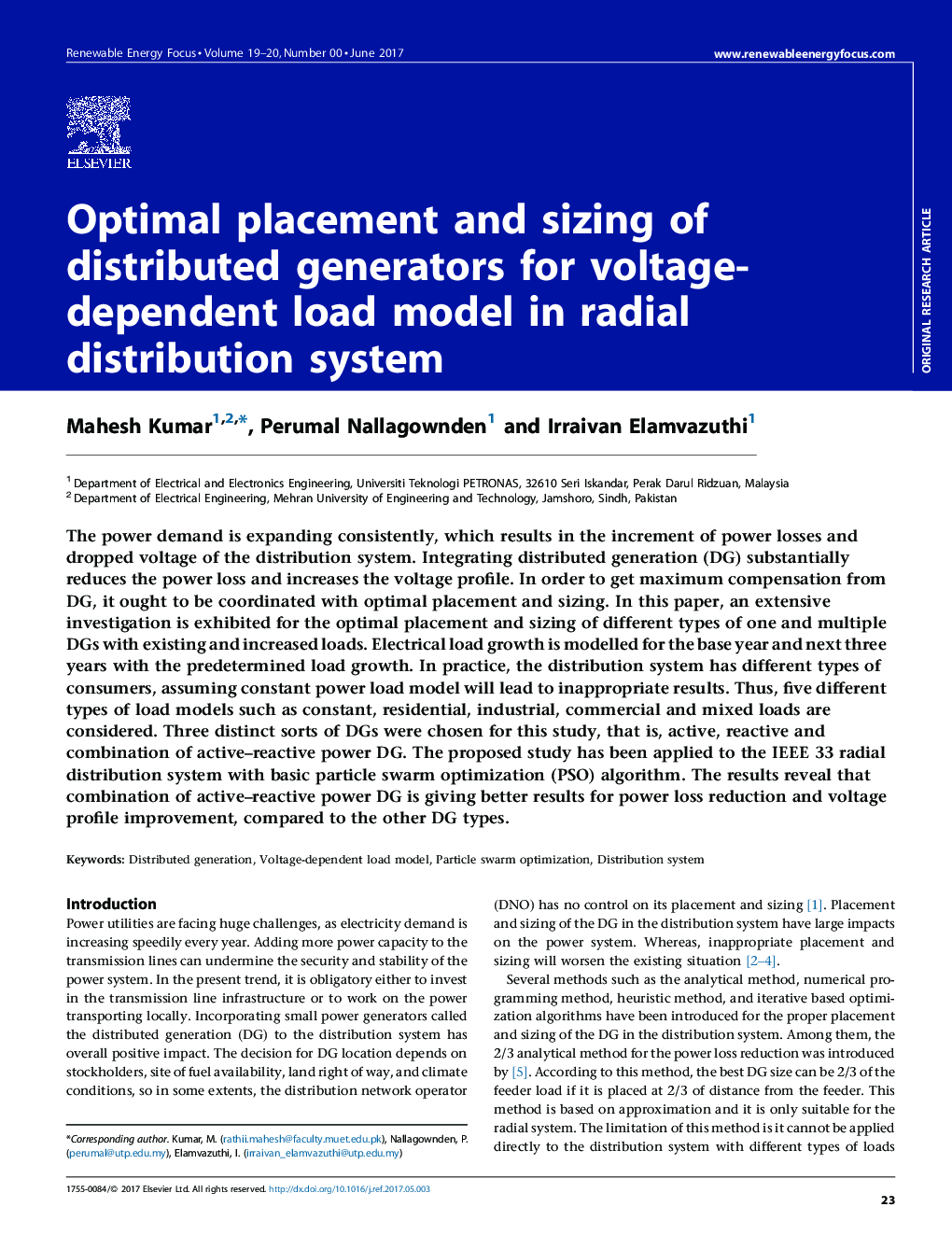| Article ID | Journal | Published Year | Pages | File Type |
|---|---|---|---|---|
| 5481805 | Renewable Energy Focus | 2017 | 15 Pages |
Abstract
The power demand is expanding consistently, which results in the increment of power losses and dropped voltage of the distribution system. Integrating distributed generation (DG) substantially reduces the power loss and increases the voltage profile. In order to get maximum compensation from DG, it ought to be coordinated with optimal placement and sizing. In this paper, an extensive investigation is exhibited for the optimal placement and sizing of different types of one and multiple DGs with existing and increased loads. Electrical load growth is modelled for the base year and next three years with the predetermined load growth. In practice, the distribution system has different types of consumers, assuming constant power load model will lead to inappropriate results. Thus, five different types of load models such as constant, residential, industrial, commercial and mixed loads are considered. Three distinct sorts of DGs were chosen for this study, that is, active, reactive and combination of active-reactive power DG. The proposed study has been applied to the IEEE 33 radial distribution system with basic particle swarm optimization (PSO) algorithm. The results reveal that combination of active-reactive power DG is giving better results for power loss reduction and voltage profile improvement, compared to the other DG types.
Related Topics
Physical Sciences and Engineering
Energy
Renewable Energy, Sustainability and the Environment
Authors
Mahesh Kumar, Perumal Nallagownden, Irraivan Elamvazuthi,
